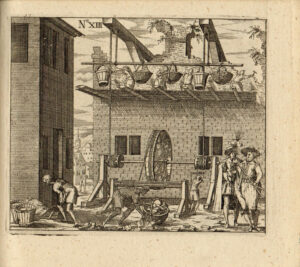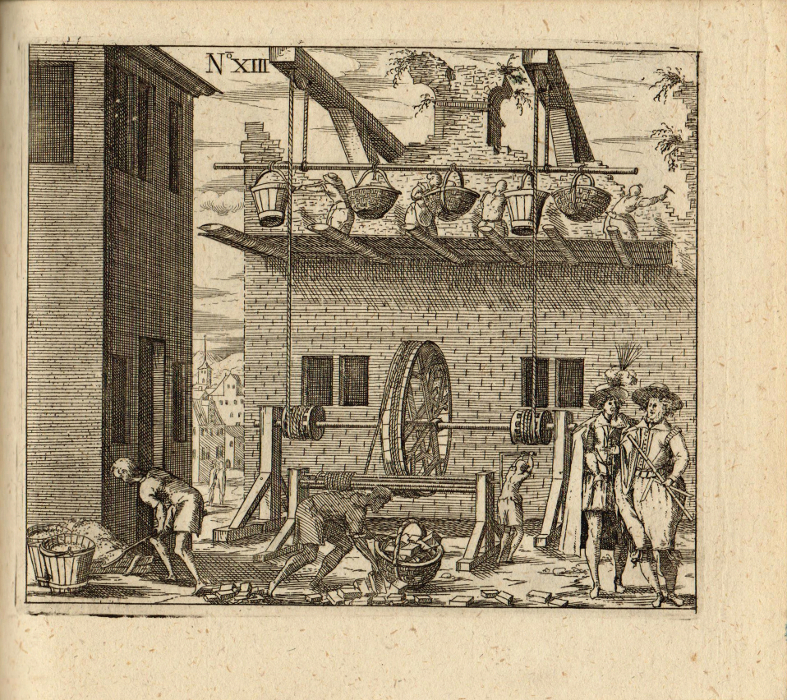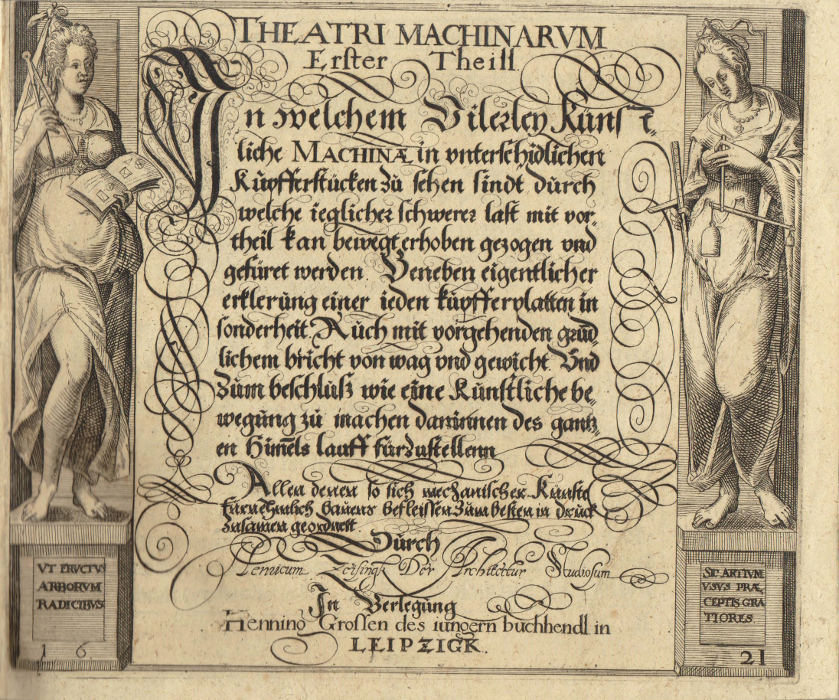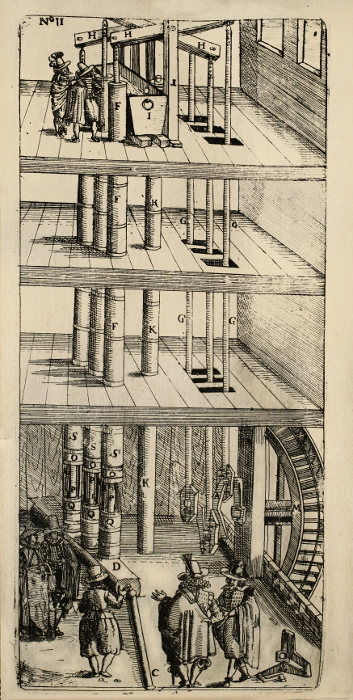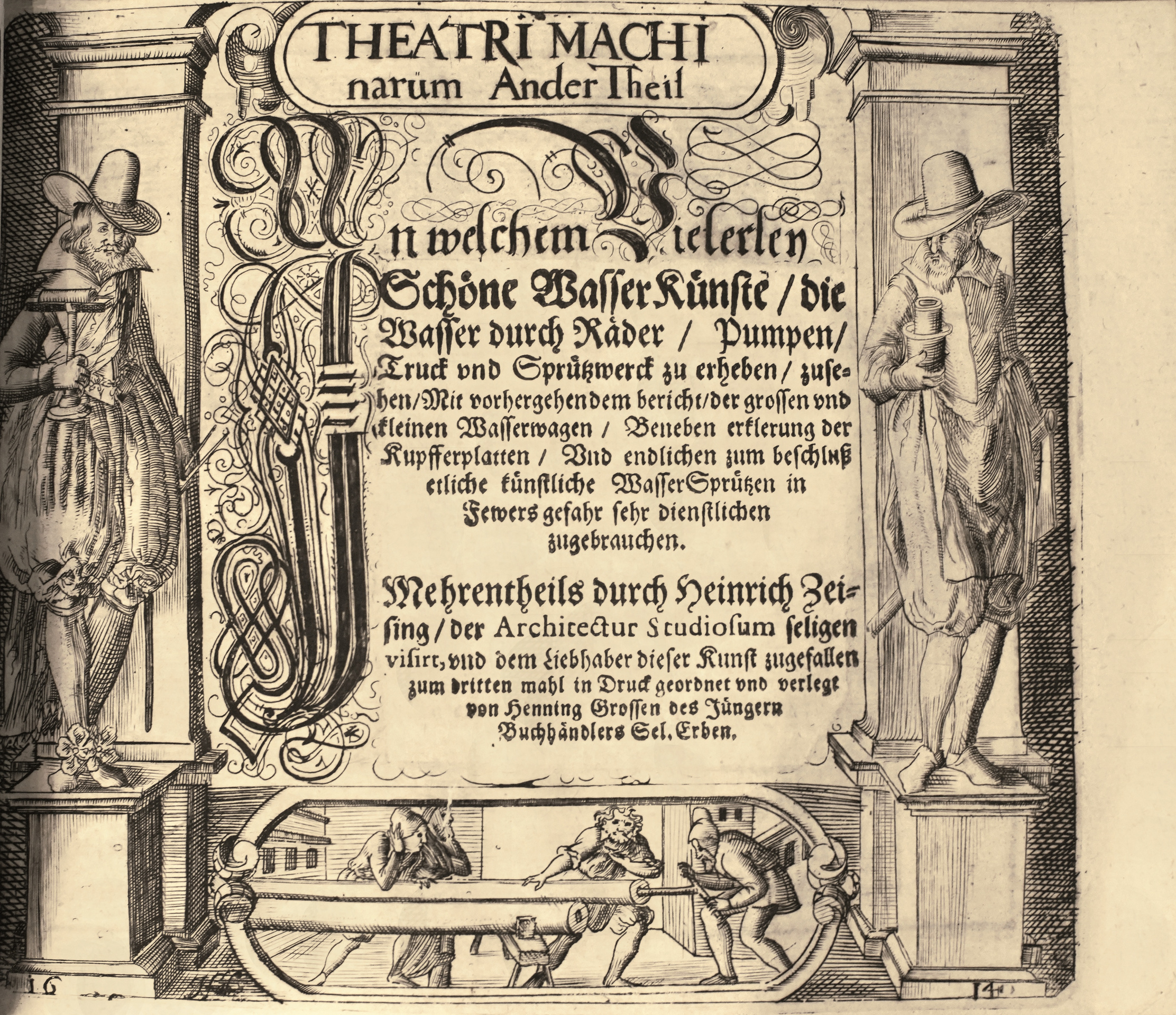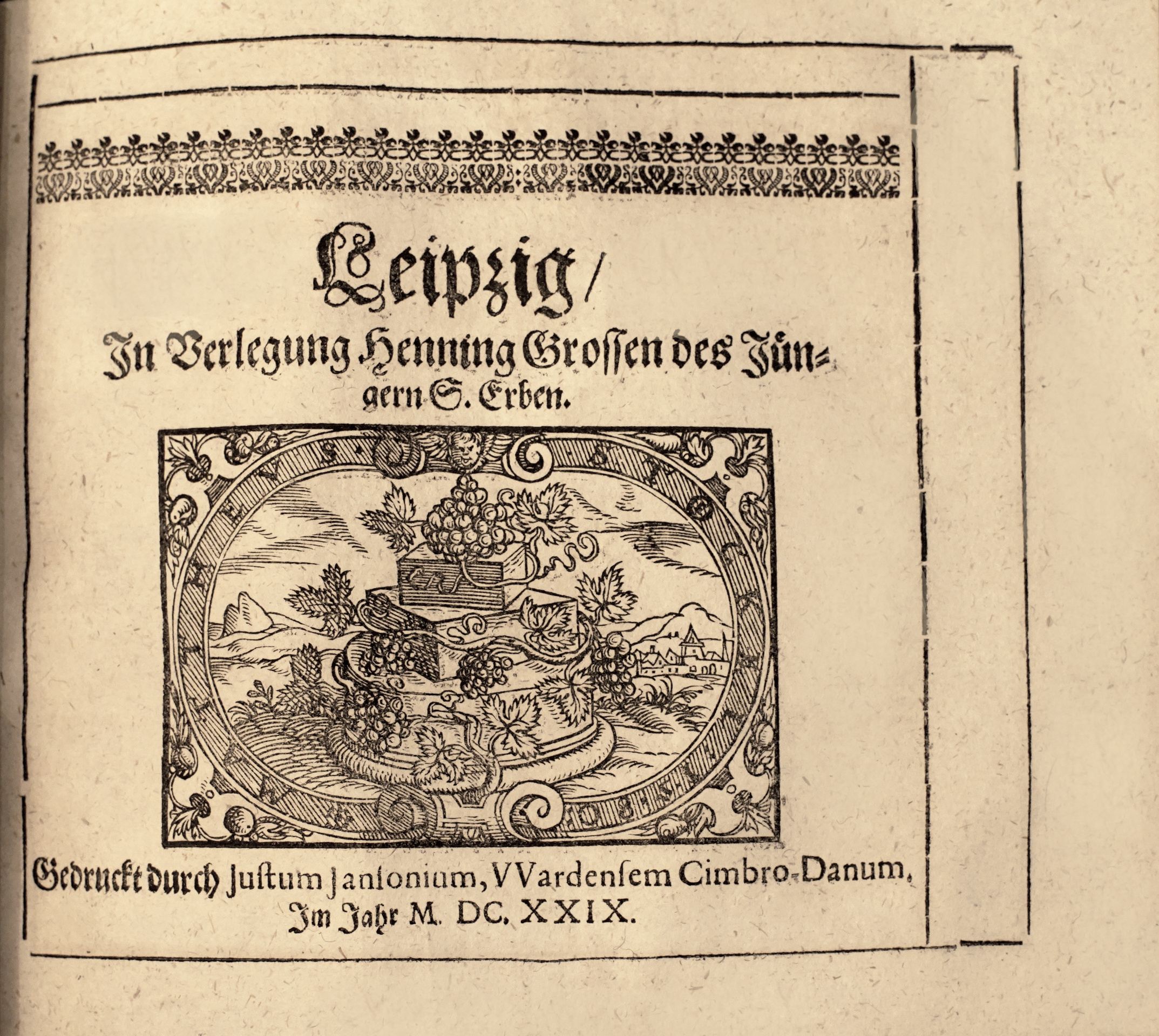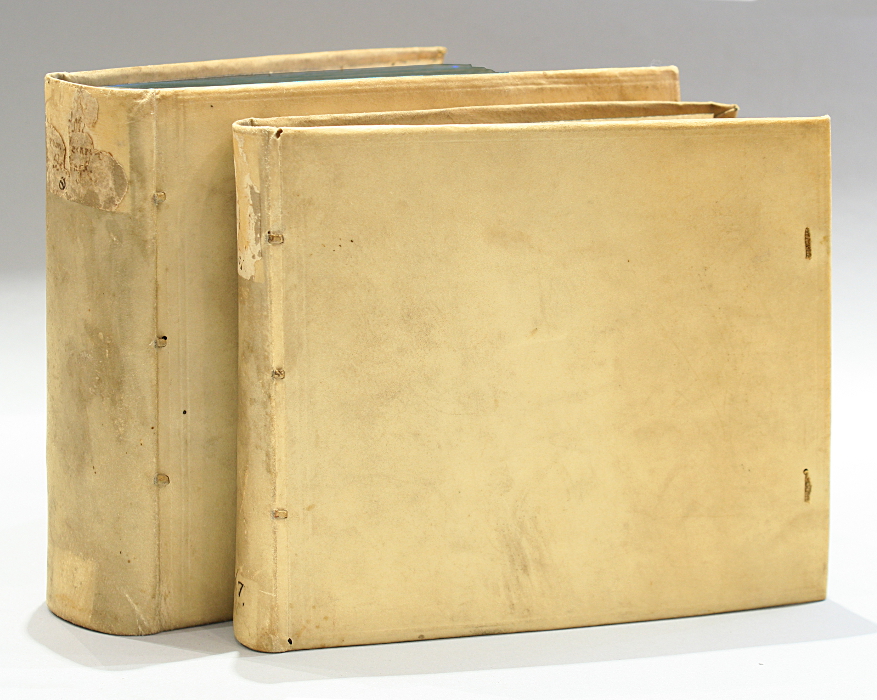Leipzigk et Altenburg, Grossen – Liegern – Meuschken – Jansonium, 1614-29.
A total of 6 parts bound in 2 oblong 8vo volumes of: I/ (32) ll. including the frontispiece title, 159 pp., (1) l.; (4) ll., 76 pp., (2) ll.; (4) ll., 91 pp., (2) pp., (1) bl.l.; (8) ll., 85 pp., (2) pp.; (6) ll., 102 pp., (1) l.; (4) ll., 175 pp., (1) l.; II/ 152 numbered plates including 21 folding ones. Small wormhole in the title of the first text, small wormtrack in the 10 last ll. of the text volume and in the 3 last plates of the illustration volume. Full ivory vellum, flat spines, remains of ties, blue edges. Contemporary binding.
Dimensions of the text volume: 156 x 185 mm. Dimensions of the plates volume: 146 x 168 mm.
Very rare second edition of the first German thêter of machines. Wolf, A history of Science, Technology… in the 16th and 17th centuries, p.541; Holstein (B.), pp. 154-156.
The author, a student in architecture, entrusted his friend, Henning Grosse the Younger, librarian in Leipzig, with the publication of this second edition, the first one published in 1607. He got Hieronymus Megiser‘s help for the translations and Johann Meuschken, Georg Liegern and Justum Jansonium’s help for the impression.
The text is articulated around six parts, êch being announced by a bêutiful Baroque frame, two of them being signed, either with the name or with the initials of Andrês Bretschneider.
The illustration, inspired by Ramelli’s one, is composed of 152 copper-engraved plates, representing suction and force pumps, fountains, winches, levers, movable bridges, cranes, hydraulic machines, locks … Most of them seem more animated and more detailed than those in the other thêters of machines by Ramelli, Zonca, Branca and Boeckler. Though half of them aren’t signed, some plates bêr the mentions HZ f. HG exc. or AB f. HC exc. These initials certainly stand for Henning Grosse, Heinrich Zeising and Andrês Bretschneider. We know that the latter settled in Leipzig in 1611, and that he worked in books illustration for Grosse, in particular with the engravings of a Ramelli published in 1620. The plates signed have been more carefully trêted than some others, remained anonymous.
A precious copy preserved in its authentic contemporary vellum binding.
